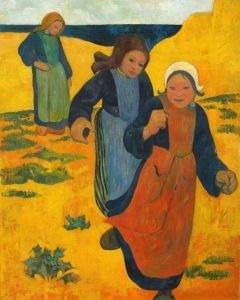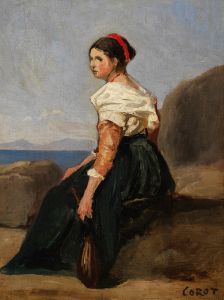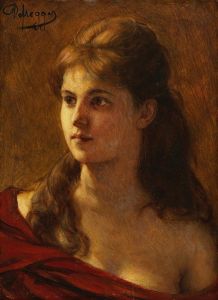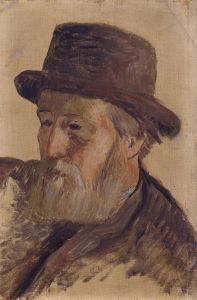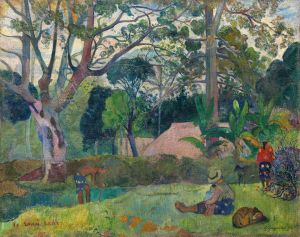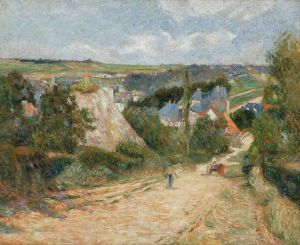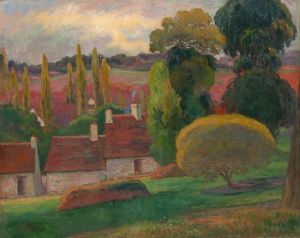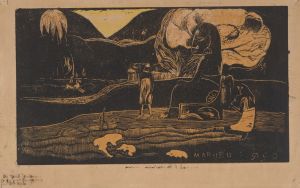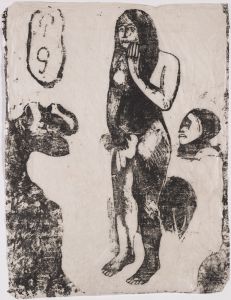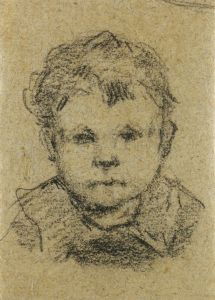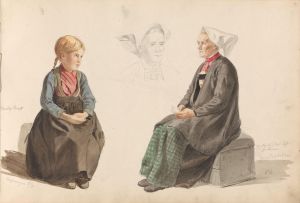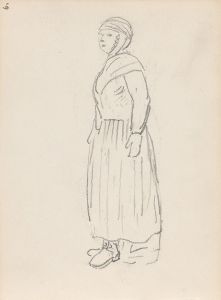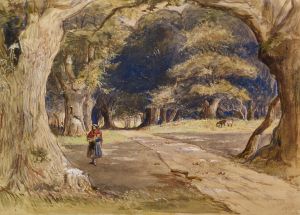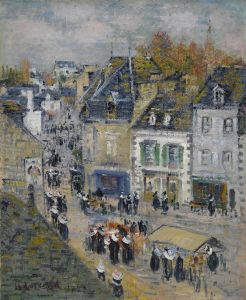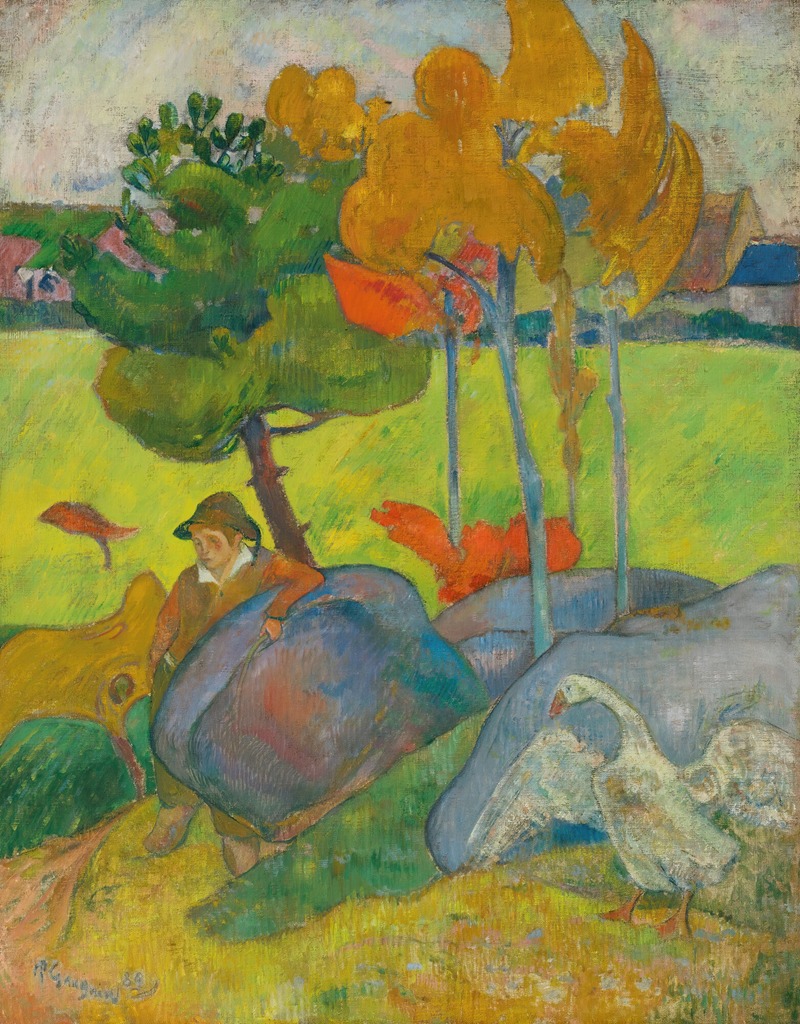
Petit Breton À L’oie
A hand-painted replica of Paul Gauguin’s masterpiece Petit Breton À L’oie, meticulously crafted by professional artists to capture the true essence of the original. Each piece is created with museum-quality canvas and rare mineral pigments, carefully painted by experienced artists with delicate brushstrokes and rich, layered colors to perfectly recreate the texture of the original artwork. Unlike machine-printed reproductions, this hand-painted version brings the painting to life, infused with the artist’s emotions and skill in every stroke. Whether for personal collection or home decoration, it instantly elevates the artistic atmosphere of any space.
"Petit Breton À L’oie" (Little Breton Boy with a Goose) is a painting by the French Post-Impressionist artist Paul Gauguin. Created in 1889, this work is a notable example of Gauguin's exploration of Breton culture and his distinctive style that combines bold colors, strong outlines, and a departure from naturalistic representation.
Paul Gauguin was born on June 7, 1848, in Paris, France. He initially worked as a stockbroker but turned to painting full-time in the early 1880s. Gauguin is best known for his experimental use of color and Synthetist style, which was a departure from the Impressionist movement. He sought to express the emotional and symbolic content of his subjects rather than focusing on realistic depictions.
In the late 1880s, Gauguin spent significant time in the Brittany region of France, particularly in the village of Pont-Aven. This period was crucial for his artistic development. Brittany, with its distinct culture, traditional costumes, and rural landscapes, provided Gauguin with a wealth of inspiration. The Breton people, their customs, and their environment became recurring themes in his work.
"Petit Breton À L’oie" depicts a young Breton boy holding a goose. The painting captures the simplicity and rustic charm of rural life in Brittany. Gauguin's use of vivid colors and strong, almost primitive lines is evident in this work. The boy is dressed in traditional Breton attire, which includes a hat and wooden clogs, emphasizing the cultural context of the scene.
The composition of the painting is relatively simple, focusing on the boy and the goose, with minimal background details. This simplicity directs the viewer's attention to the subjects, highlighting their innocence and the bond between the child and the animal. Gauguin's technique in this painting reflects his interest in folk art and his desire to move away from the conventions of Western art.
Gauguin's time in Brittany was marked by his association with other artists, including Émile Bernard and Charles Laval, who were also exploring new artistic directions. Together, they formed the Pont-Aven School, which played a significant role in the development of Symbolism and Synthetism in art. Gauguin's work from this period, including "Petit Breton À L’oie," demonstrates his innovative approach and his quest for a more profound, symbolic representation of reality.
"Petit Breton À L’oie" is part of Gauguin's broader body of work that explores themes of rural life, cultural identity, and the human connection to nature. This painting, like many of his works, reflects his fascination with the simplicity and authenticity of life outside the urban centers of Europe.
Today, Paul Gauguin is regarded as one of the leading figures of Post-Impressionism. His works have had a lasting impact on modern art, influencing artists such as Pablo Picasso and Henri Matisse. "Petit Breton À L’oie" remains a testament to Gauguin's unique vision and his ability to capture the essence of his subjects through his distinctive style.
The painting is held in various private collections and museums, contributing to the appreciation of Gauguin's legacy and the rich cultural heritage of Brittany. Through works like "Petit Breton À L’oie," Gauguin's artistic journey and his contributions to the evolution of modern art continue to be celebrated and studied.





